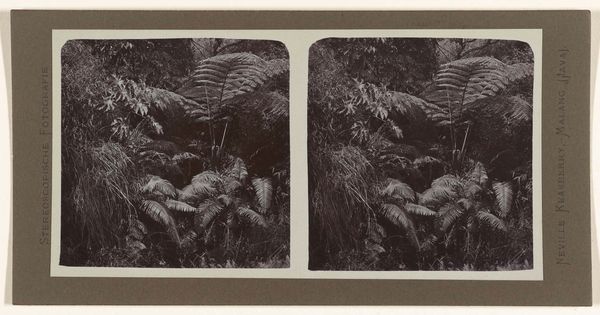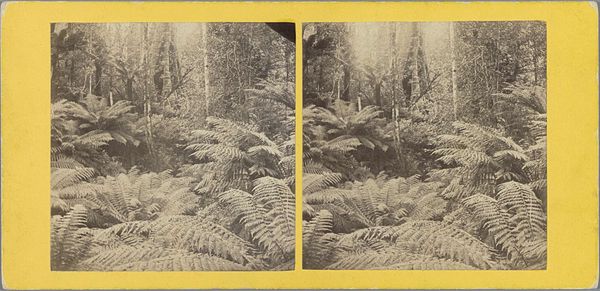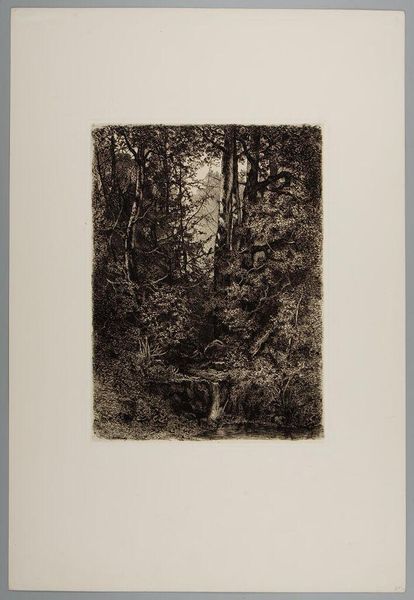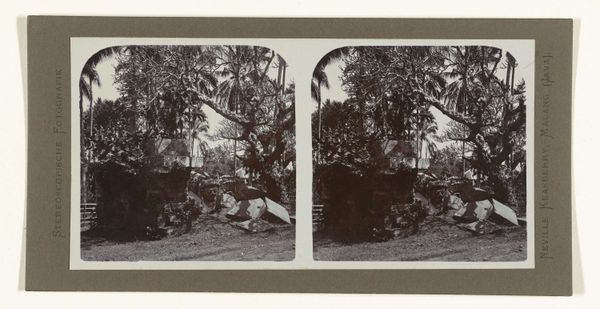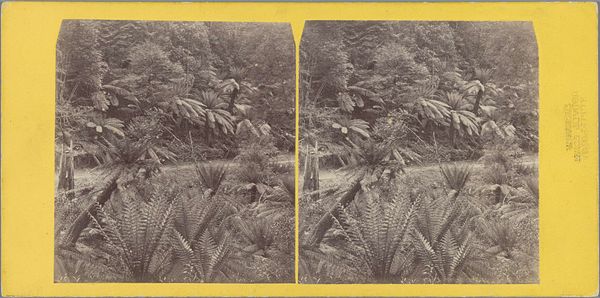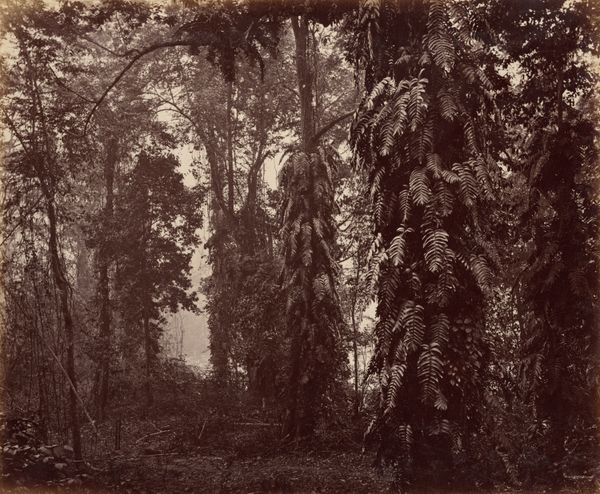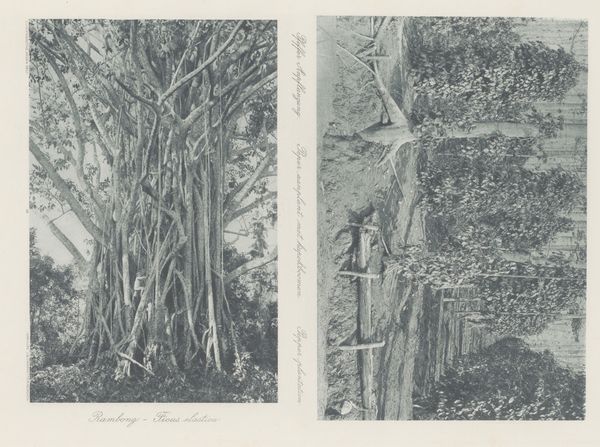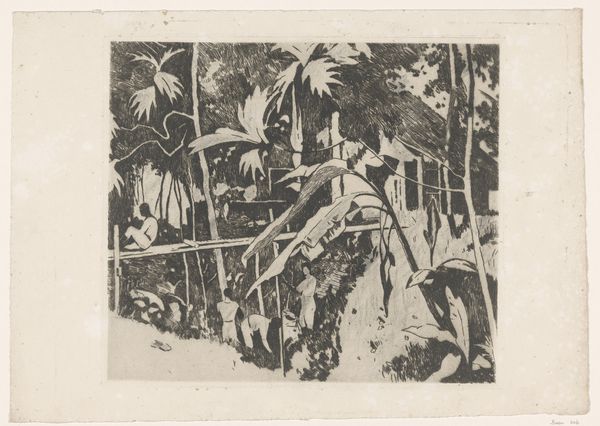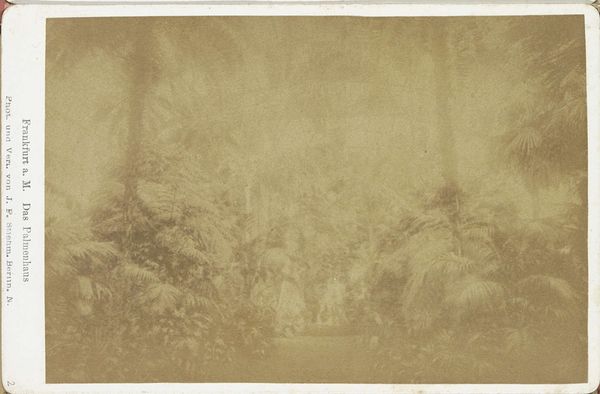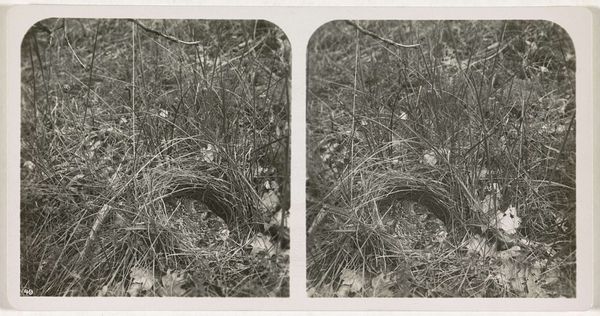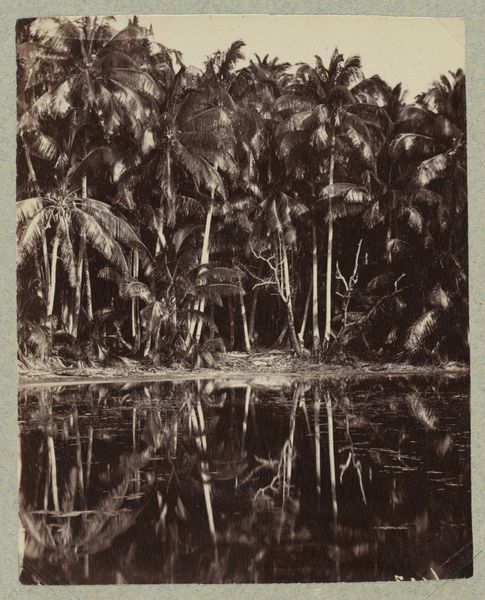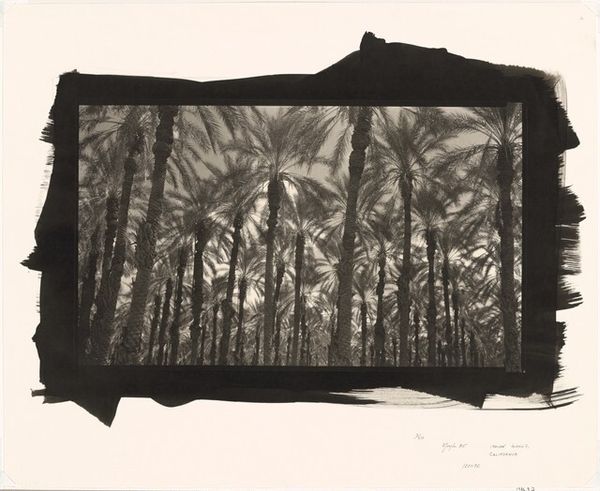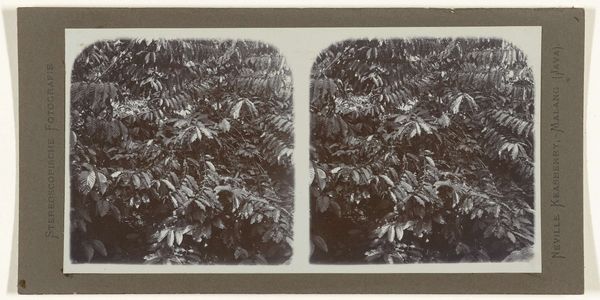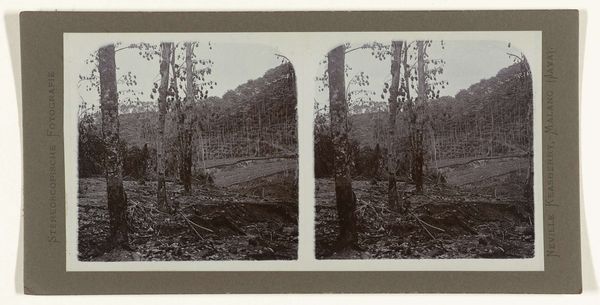
Dimensions: height 76 mm, width 152 mm
Copyright: Rijks Museum: Open Domain
Editor: We're looking at a photograph entitled "Bos met rotan palmen," or "Forest with Rattan Palms," dated sometime between 1900 and 1935. It's quite a dense, almost overwhelming image of a tropical forest. It's visually rich, but I'm curious about its deeper context. What do you see in this piece, considering the time it was made? Curator: It’s crucial to see this photograph within the context of colonialism and scientific exploration. Early photography like this wasn't just art; it was documentation. These images helped to construct ideas about exotic lands, feeding European perceptions and power structures. The dense composition isn't accidental; it emphasizes the wild, untamed nature that colonial powers believed they were meant to 'civilize'. Do you see any element suggesting control or manipulation? Editor: Hmm, I don't immediately see anything overt, but now that you mention it, the composition, while appearing natural, feels deliberately arranged to convey that sense of wildness... almost as if to confirm a pre-existing belief. Curator: Precisely! The absence of people also reinforces a specific narrative, one where the land is seen as unoccupied, ready for the taking. Furthermore, consider who this photograph was for. Stereoscopic images like these were hugely popular in Europe, allowing people to experience a seemingly 'realistic' view of distant lands from the comfort of their homes. The consumption of these images shaped public opinion and supported colonial projects. Editor: So, beyond just being a photograph of a forest, it's actively participating in a larger cultural and political project. That gives it a whole new dimension. Curator: Exactly. It is a great example of the intricate link between visual culture and socio-political forces, reminding us that art, even in the form of photography, doesn't exist in a vacuum, but serves as a window into a world, framed with deliberate intentions and implications. Editor: This makes me think about the power of images and how they can shape perceptions and influence decisions. Curator: And that’s a critical understanding, one we should always carry with us when we encounter visual media, then and now.
Comments
No comments
Be the first to comment and join the conversation on the ultimate creative platform.
